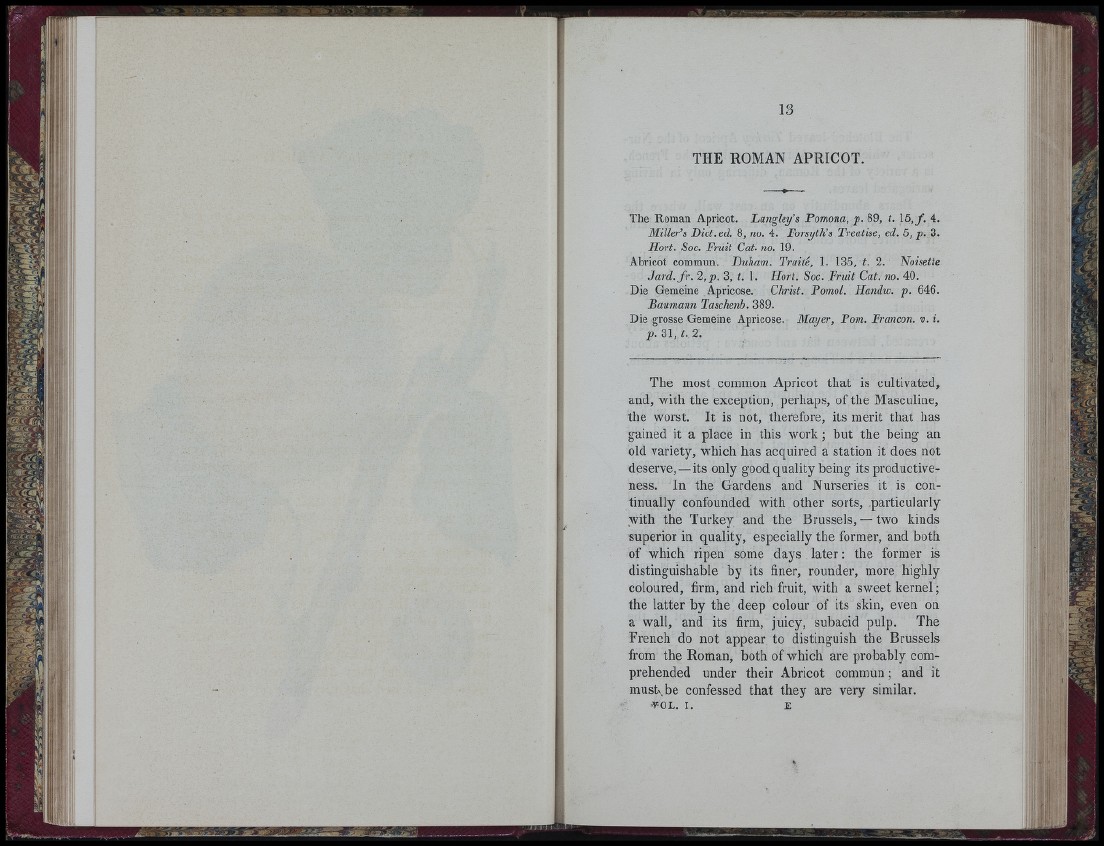
TH E ROMAN A PR ICO T.
The Roman Apricot. Langley’s Pomona, p . 89, t. 15, f . 4.
Miller’s Dict.ed. 8, no. 4. Forsyth’s Treatise, ed. 5, p . 3.
Hort. Soc. Fruit Cat. no. 19.
Abricot commun. Duham. Traité, 1. 135, t. 2. Noisette
J a r d .f r . 2, p . 3, t. 1. Hort. Soc. Fruit Cat. no. 40.
Die Gemeine Apricose. Christ. Pomol. Handw. p . 646.
Baumann Taschenb. 389.
Die grosse Gemeine Apricose. Mayer, Pom. Francon. v. i.
p . 31, t. 2.
lit
The most common Apricot th a t is cultivated,
and, with the exception, perhaps, of the Masculine,
the worst. I t is not, therefore, its merit th a t has
gained it a place in this work ; but the being an
old variety, which has acquired a station it does not
deserve,—its only good quality being its productiveness.
In the Gardens and Nurseries it is continually
confounded with other sorts, particularly
with the Turkey and the Brussels, — two kinds
superior in quality, especially the former, and both
of which ripen some days later : the former is
distinguishable by its finer, rounder, more highly
coloured, firm, and rich fruit, with a sweet kernel ;
the la tte r by the deep colour of its skin, even on
a wall, and its firm, juicy, subacid pulp. The
French do not appear to distinguish the Brussels
from the Roman, both of which are probably comprehended
under their Abricot commun ; and it
mustxbe confessed th a t they are very similar.
VOL. I. E
ii
IIIIÏ